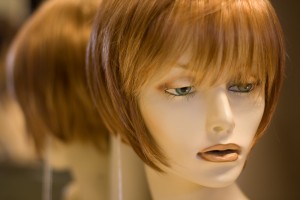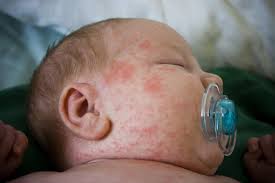Category: Skin Problems
How Can Wigs Damage your Hair and Scalp?
 Wigs can work wonders for those with medical hair loss. If you have lost hair because you are undergoing chemotherapy treatments, you can get a wig until your treatment is complete and your hair grows back again. When you wear a wig, you feel more confident and beautiful.
Wigs can work wonders for those with medical hair loss. If you have lost hair because you are undergoing chemotherapy treatments, you can get a wig until your treatment is complete and your hair grows back again. When you wear a wig, you feel more confident and beautiful.
People, who have thin hair or suffer from eczema dermatitis, can use wigs to look comfortable in their social circle. Today, wigs are very different from the heavy and uncomfortable wigs from the past. They are comfortable, lightweight, realistic, and painless to wear. Even though modern wigs have several advantages, you could face some problems when you wear them.
Possible Problems
Here are some common problems people face when they use wigs.
Headaches
If the wig is not worn properly, it can cause headaches. At times, wigs that donât fit properly can put pressure on certain areas of the head which can cause frequent headaches. This is not a major problem and can be easily avoided by loosening the wig cap or changing the wig.
Hair Loss
Another common problem associated with wearing wigs is that they can damage your hair. To avoid this problem, you must clean and condition your hair regularly. Secondly, take time to position you hair and wig. If you simply jam your hair under the wig, it will make your hair weak and increase the risk of breakage.
Prevents Hair Growth
Wearing synthetic-hair wigs can lead to several scalp health problems because it prevents it from getting the natural oil. This can make the scalp extremely dry. A dry scalp can be extremely painful and reduce the chances of new hair growth. If you want to avoid this problem, you must avoid wearing wigs continuously for several hours. When the scalp is exposed to fresh air, it prevents the scalp from drying.
Cause Permanent Damage
Lace face wigs are usually fixed using bonding glue or a spirit gum. When these products are applied to your hair repeatedly, it can thin out the edges of your hair and can even create patches at the hairline. This can permanently damage your hair and these effects cannot be reversed. Here is the experience of Countess Vaughn who wore wigs regularly:
 Her experience clearly shows that wearing wigs does have some nasty side effects.
Her experience clearly shows that wearing wigs does have some nasty side effects.
Allergies
If the wig is made using a material that you are allergic to, it can cause itchiness and can even damage your hair. To avoid this problem, you must buy good quality wigs that donât contain harmful chemicals. These wigs are relatively expensive but they are worth their price.
The Science of Getting a Wig
So what are the points you should keep in mind when getting a wig? When you shop for a wig, you will find many varieties of wigs available in the marketplace. Some are expensive while others are relatively cheap. Most expensive wigs are high quality wigs that reduce the risk of allergies and diseases, and will remain beautiful for several years to come. So decide on the amount you want to spend when you go shopping for a wig. If you plan to use the wig occasionally, you can get away with an inexpensive wig. However, if you plan to use the wig regularly, you should get a good quality wig.
The way you plan to style your hair will also decide the wig you should buy. Synthetic-hair wigs cannot be permed, colored, or curled. So, if you plan to curl or style your hair, then avoid getting an inexpensive wig. Natural-hair wigs are a bit expensive, but they can be easily cut and curled.
If you plan to use your wig daily, you must look for wig hairpieces that are finely woven and light. This will allow the air to circulate through the wig and prevent dry scalp. They are also comfortable and reduce friction.
Taking Care of Your Scalp and Hair
Once you get a wig, you must learn to use it properly. Some of the things you can do to take care of your scalp and hair are:
Rinse the Wig Thoroughly
Make sure you rinse your wig thoroughly after washing it. If the wig is not rinsed thoroughly, it can leave conditioner or shampoo residue, which can cause scalp irritation.
Plan a Refresher
If you plan to wear the wig for the whole day, you must plan to refresh the scalp several times. You could carry organic witch-hazel with you and every few hours, go to a private place, remove your wig, take a wet cloth with witch hazel, and apply it on your scalp. This will prevent oil build up and make you comfortable. You could also carry an organic soothing gel to soothe the skin on your scalp and face.
Consider Using a Cotton Liner
You could use a cotton liner under your wig, which will help in absorbing heat and moisture and make you feel more comfortable. These cotton liners are inexpensive and can be easily bought from a wig shop or online store.
Care for your Wig
Frequent use of wig can increase wear and tear, which damage the strands of hair and can also cause itching. This problem can be avoided by taking care of the wig according to the manufacturerâs instruction.
Use Zinc Lotion
If you notice redness, bumps, and skin irritation after wearing the wig, you could try some organic zinc lotion. The antibacterial properties of zinc prevent irritation and skin infection.
Final Thoughts
You must be extremely careful when getting or using a wig. If you have sensitive skin, you should get a good quality wig that reduces the risk of skin irritation. People, who suffer from allergies or skin problems, must consult their dermatologist before getting a wig.
References
http://www.hairwizz.com/how-to/wigs-cause-health-problems
https://www.funadvice.com/q/are_wigs_safe_to_wear
http://www.ehow.com/facts_5622654_effect-wigs-hair-growth.html
Common skin problems and rashes on babies
 If your baby is suffering from rashes or any other skin problem, donât be scared, as most problems will go away on their own in a few days. However, if the problem persist for more than a week, it is best that you get medical help. Here are some problems that your baby can suffer from:
If your baby is suffering from rashes or any other skin problem, donât be scared, as most problems will go away on their own in a few days. However, if the problem persist for more than a week, it is best that you get medical help. Here are some problems that your baby can suffer from:
Pimples
Babies can get pimples in nose, cheeks, and forehead. Acne can show up in the first few weeks of their life but they usually clear up in few months. Acne has nothing do with whether a child will suffer from acne when they grow up.
At times white spots may appear on the face of the baby. These spots are known as milia. They are also known as Epstein if they appear on the gums and the roof of the mouth. These are usually not dangerous and they disappear in a few weeks.
Blotchy Skin
During the first few days, the baby may get red blotches that contain pus. These blotches are known as erythema toxicum and they are usually harmless. Some babies may have it all over their body while others have these blotches in some parts. These blotches will usually go away within a week.
Some babies may suffer from harmless rashes known as pustular melanosis. These rashes can cause pus-filled pimples that usually break open to form dark spots. Most babies who suffer from these rashes are usually born with it. These rashes will disappear within a week but dark spots caused by rashes can take a few months to disappear.
During winters, some babies can get lacy or blotchy rashes on their torso and limbs. If you take steps to keep your room warmer, these rashes will disappear. Babies who are more than 6 months of age usually donât suffer from this problem.
Rashes
Some babies get heat rashes when they are dressed warmly or when the weather is hot. These pink or red rashes are known as prickly heat and they are usually found in areas that are covered by clothes. These rashes can itch which can make your baby very uncomfortable. To avoid these rashes, you must dress you baby in clothes that are light and lose. Also, give your baby a cool bath at least once a day during summers to avoid rashes.
Wearing wet diapers for a few hours can cause soreness and red rashes on the genitals or bottom of the baby. The stool and urine on the diapers can irritate the skin of your baby. Babies can also suffer from diaper rashes when they in same position for several hours. Diaper rashes can also be due to infection caused due to yeast or bacteria. If your baby is suffering from diaper rashes, you must take extra care to protect your baby from infection causing bacteria. Also, make sure you change their diapers every few hours and keep them as dry as possible.
Some babies have rashes on their face near the mouth and the chin. These rashes could be caused by spitting up or drooling. You can get rid of these rashes by cleaning your babies face as often as possible especially after your baby spits up or eats.
Scaly Scalp
Many babies get have a crusty or scaly skin on the top of their head. This is a normal build-up of scales, oils and dead cells. Like other problems, you can treat this problem by using mineral oil or shampoo. This is not a serious problem, as the scaly skin will usually disappear in a few months.
